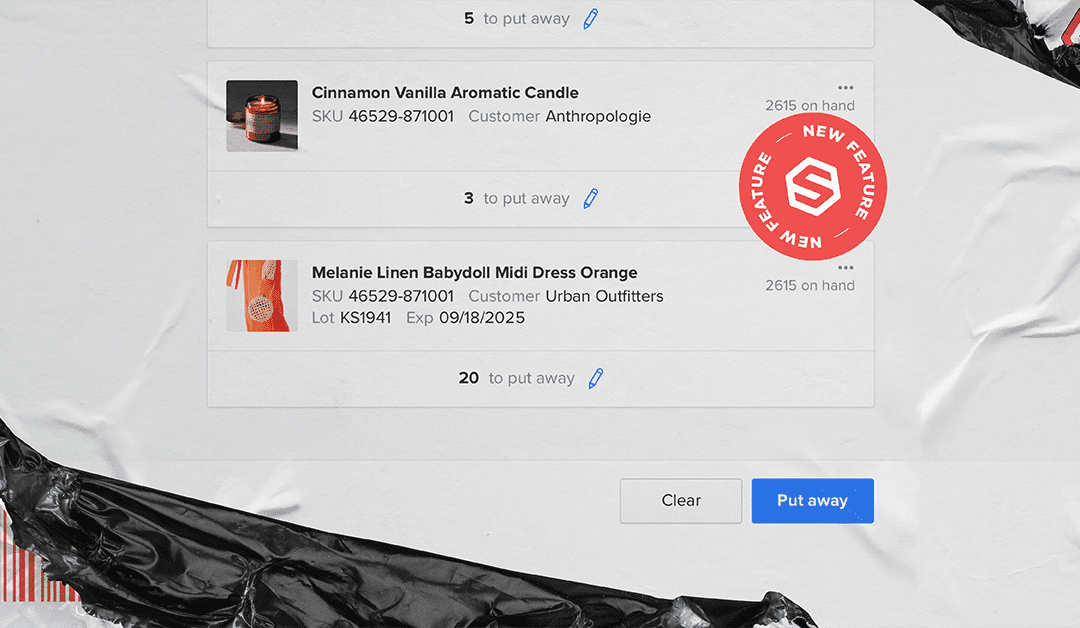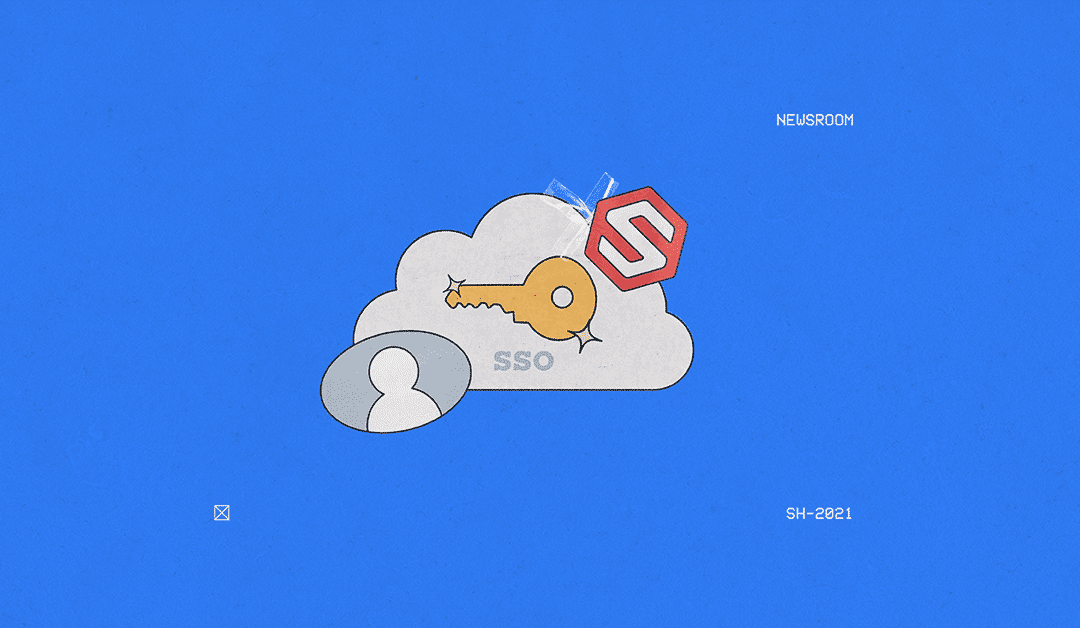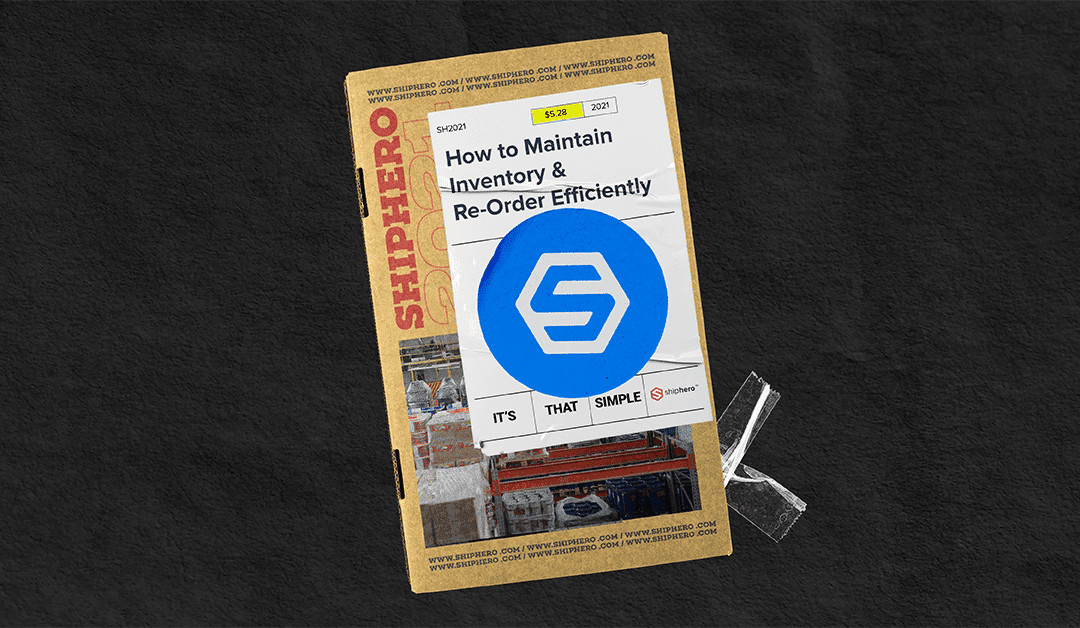
Nov 12, 2021 | Blog, Fulfillment, Warehouse Management Software
Technology and automation have dramatically streamlined modern business processes. The logistics industry in particular has grown tremendously thanks to modern advancements. Despite the power of technology though, eCommerce brands still need to have effective inventory management systems in place to optimize their order fulfillment processes.
To optimize your inventory management, it’s important to use a combination of the best practices and industry-leading software solutions. By streamlining your inventory management, you can cut back on unnecessary expenditure, fulfill orders quicker and increase your bottom line.
How to Create an Inventory Management Process That Just Works
Here are the best practices for creating an inventory management process that works for every successful business.
Data is Your Hero
Accurately reporting your relevant inventory data is a vital part of an effective inventory management system. All the data including your beginning inventory, how many finished inventory items were shipped out, your cost of goods sold (cogs), product returns, deadstock, and inventory quantity need to be accounted for.
To report data accurately, your team needs to be actively engaged in supply chain management. Make a point to count inventory and compare the value with the figure on the GRN (Goods Received Note). If you deal with perishable items, you need to be especially careful about expiration dates. You should pay attention to any stock damage or returns and keep a comprehensive written record.
Implement a Warehouse Management System
A warehouse management system is a collection of software and processes that enable a business to control and monitor all operations within the warehouse.
A warehouse management system gives businesses real direction and control over their warehouse processes. With a system in place, you can optimize each process and use analytics to monitor performance.
Warehouse management software lets you monitor assets from the time they’re delivered from the manufacturers to the time they reach your customers.
A strategic warehouse management system streamlines restocking and logistics operations and uses demand forecasting tools to balance your inventory levels. WMS software tools take care of important calculations like your economic order quantity.
They also integrate well with any system, whether it’s the periodic inventory system or the perpetual inventory system.
Or Work With a 3PL
As your eCommerce store grows, keeping up with order fulfillment becomes increasingly difficult. Brands reach a point where to keep up with demand, they have to decide whether to:
- Hire more, specialized logistics personnel to handle the increasing demand.
- Hire less experienced staff and train them up.
- Work with a third-party logistics provider (3PL).
Initially, many businesses shy away from option (3) because of the significant upfront costs. However, in the long run, the third option cuts back your expenses and optimizes your fulfillment process.
With option 1, the costs of hiring specialized personnel add up. Moreover, as your brand continues to grow, you might have to hire even more employees to keep up with the demand.
On the other hand, option 2 puts you at risk of heightened expenses due to inexperienced team members and more mistakes. An inexperienced team translates to delays and incorrect orders.
Third-party logistics (3PL) providers, on the other hand, give you access to a team of experienced professionals without you having to pay salaries and benefits. They’re partners; not employees. About 86% of Fortune 500 companies and 96% of Fortune 100 companies use 3PL services.
Audit your Existing Inventory Management Processes to Discover and Analyze Issues
An audit of your management processes identifies problems that you can improve to streamline inventory processes.
For example, is your picking team finding it difficult to locate items? Then it’s time to organize your inventory better. A ratio analysis where you compare your current financial year to the last helps identify potential performance issues too.
If last year’s numbers were better, you might be losing revenue on unnecessary expenses, like storage costs due to overstocking.
After discovering problems in your management processes, you can take proactive steps to solve them and streamline your fulfillment process.
Implement an ERP
An enterprise resource planning (ERP) system is software designed to help organizations manage their daily business tasks. An ERP can manage a multitude of business activities ranging from accounting and HR to risk management and supply chain operations.
You can move your financial data over to the software after installing it. The inventory software is then free to organize warehousing operations and manage inventory logistics.
With an ERP, you can monitor your operations through your mobile devices, and the software facilitates integrations with popular eCommerce applications including eBay, Amazon and Shopify.
Use Multiple Fulfillment Centers
While a single fulfillment center seems more cost-effective because of the reduced storage costs, there are some additional expenses you need to consider.
Having multiple, strategically located fulfillment centers cut down your delivery times and costs. This is because your business can fulfill orders from the center nearest to the recipient. It also means you can offer expedited shipping, which consumers have come to expect as standard practice.
Since small businesses can’t always afford the overheard that follows using multiple centers, many turn to a 3PL provider instead. Leading 3PLs have their own network of distributed fulfillment centers that you can utilize by partnering with them.
Change your Inventory System
It is crucial to choose an inventory valuation method that best aligns with your business model. With the first in, first out method there are certain advantages, such as a reduced risk of obsolete inventory and a reduced inflationary impact.
The valuation method you select can significantly influence your inventory management process. You need to choose one that best suits your business.
The first in, first out (FIFO) method offers certain advantages, like reduced risk of obsolete inventory and less inflationary impact. But some businesses choose to swap from FIFO to methods like JIT.
The ‘just in time’ (JIT) method requires less storage space, because you buy stock on an immediate-need basis. Using this method also means you have working capital to invest elsewhere, rather than having it tied up as stock.
JIT also reduces your chances of overstocking significantly. But, at the same time, JIT doesn’t leave much room for error or delays. If your supplier runs late, and customer orders are coming in, orders may end up delayed or unfilled altogether.
Conclusion
Effectively managing your inventory improves the efficiency of your entire fulfillment process, leading to faster deliveries, accurate orders, reduced costs, and happier customers.
You can optimize your inventory management by implementing the best practices, including leveraging distributed fulfillment centers, implementing an EPR, and taking a data-driven approach.
However, managing your inventory processes isn’t easy, especially if your eCommerce brand is growing rapidly. If you’re struggling with inventory management, ShipHero’s warehouse management software and team of experts can help streamline your operations.

Nov 11, 2021 | Blog, News & Updates
By: Aaron Rubin, Founder & CEO of ShipHero
Since we started, ShipHero has paid close attention to our clients’ wants and needs which has led to often highly positive reviews on third-party sites like G2, Shopify, Trustpilot and Capterra. We take these reviews seriously and look to them not only for pats on the back, but to learn and grow from the feedback our clients take the time to provide.
This fall, we’re honored to say ShipHero has been ranked #1 in the G2 Momentum Grid® Report for Shipping Software. This is a huge achievement, and to be ranked #1 by G2, the world’s largest platform for software reviews makes this award even better.
Building Momentum
It’s no secret that ShipHero has been building momentum in the past 12-18 months. You have to keep growing or you die. To be the Leader in the Momentum category for Shipping Software means we outpaced our competitors in areas like web growth, social growth and employee growth. We beat out some of our staunchest rivals, including ShipStation and FreightPOP in all of these areas.
The Momentum Grid® Report for Shipping named ShipHero as the highest-ranking shipping software platform in three areas: Momentum Score, Satisfaction Score, and Momentum Grid Score. Only three shipping software providers qualified as a Momentum Leader, with ShipHero ranking number one.
Customer Satisfaction
We were named a leader in the Shipping Software category as well. This ranking is based on two things:
- High Customer Satisfaction Rating
- Large Market Presence
We have always stated that our Support Team is key to our business. In fact, we have two times as many employees for our Onboarding Team as our Sales Team. We let others talk; at ShipHero, our goal is to do.
As a result, 95% of ShipHero users rated their customer satisfaction 4 out 5 stars, making ShipHero one of the top 5 shipping software companies based on customer satisfaction. G2 ranked a total of eighteen shipping software providers in its Fall 2021 report. It’s also important to note that 88% of our current customers would recommend us to other eCommerce companies in need of powerful shipping software.
Onward and Upward
These rankings mean a lot to us, because they prove that our client-first approach, our commitment to always doing things the right way, and our belief that our software is the best around are well-founded. We’d also like to note that our ratings on similar review sites range from 4.8 to 4.9 out of 5 stars. It’s validating to know we’re doing a lot of things right and better than our competitors.
If you’re looking for powerful shipping and warehouse software, ShipHero has the tools and processes you need to bring order to your warehouse chaos. Our software runs in our 5 owned and operated warehouses across the United States because it works. If you need more proof, check out the details of the G2 Momentum Grid® Report for Shipping Software, Fall 2021 HERE.
Schedule a meeting today with our experts to learn more about our warehouse management software built for ecommerce brands & 3PLs looking to run their best warehouse and how ShipHero works to ensure that organizations invest in the solutions that match their needs, to improve productivity, revenue, and success.
Click HERE to Schedule a Meeting Today
Aaron Rubin, Founder & CEO
ShipHero
About the author: Aaron Rubin is the Founder & CEO of ShipHero. He is responsible for planning and executing the overall vision and strategy of the organization. Rubin’s greatest strengths are leadership, change management, strategic planning and a passion for progression. He is known for having his finger on the pulse of ShipHero’s major initiatives, his entrepreneurial spirit, and keen business acumen. His leadership of ShipHero is grounded in providing excellent customer service that drives improved business operations. His passion for ShipHero comes from the culture and his ability to have an impact on the lives of employees, customers, partners, and investors.
Follow Aaron on Twitter & LinkedIn.

Nov 9, 2021 | newsroom
ShipHero is proud to announce a new feature for its SaaS Mobile App: Putaway. This new functionality will save clients time and money by making it easier and more efficient to identify empty warehouse locations and putaway inventory.
Here’s How It Works
- On the ShipHero Mobile App, navigate to Products → Putaway
- You’ll be able to choose how you would like to Putaway the product:
- Scan Location: Add all products from a location to your list
- Scan a Case/Item: Add products to your list by scanning the case or the item barcode
Plus, Putaway will indicate which of your products need replenishment, so you can get those putaway fastest and back into inventory.
Once the product has been scanned or the list has been created, you can then choose how many of each SKU to allocate to a specific area. The easy-to-read screen provides an ongoing status update so that you can be assured no product has been forgotten.
Putaway saves you time and energy. You’ll no longer need to keep a manual list of open locations in the warehouse or try and remember where you put the rest of an item. Now, with a few simple taps, you’ll have the information you need to keep your warehouse running at peak efficiency. Please note that inventory is currently only for ShipHero clients using dynamic slotting. Clients that are still using static slotting won’t be able to use this feature.
To learn more about the superpowers of Putaway, click HERE.
For access to the Knowledge base article, please click HERE.
New to ShipHero? Schedule a meeting today with our experts to learn more about our Shipping Software built for eCommerce brands & 3PLs looking to run their best warehouse and how ShipHero works to ensure that organizations invest in the solutions that match their needs, to improve productivity, revenue and success.
Click HERE to Schedule a Meeting Today

Nov 8, 2021 | newsroom
ShipHero is proud to announce that our team has rolled out a Single Sign-On option, protected by SAML2. This added functionality makes it easy for companies with multiple password-protected programs to sign-on once for full access. No more entering multiple passwords over and over again!
Secure Single Sign On
This new feature was recently rolled out in ShipHero’s mobile app. With the use of the SAML2, SSO is a safe and secure way to pass login credentials to different Identity Providers (IdPs) to use those credentials across connected networks.
To ensure a smooth roll-out, ShipHero’s Development team used themselves as guinea pigs. “The worst case scenario with SSO is locking people out of their own systems,” Yosef Haas, ShipHero’s VP of Product said. “We knew that the best way to test it was to use our own employees as test cases. We want this increased functionality to come with as few hiccups as possible.”
Because SSO requires a bit of maintenance and upkeep on the backend, there is a fee for this added functionality. Non-enterprise clients will be charged $299 per month for this feature.
Contact Customer Support
If you’re interested in implementing SAML2 SSO for your ShipHero account, please contact our client support team, HERE. The monthly cost for this added functionality is $299 for non-Enterprise clients and free for Enterprise clients.
About ShipHero
ShipHero is a US based, leading provider of cloud-based e-commerce fulfillment solutions that gives online retailers and third-party logistics providers the tools to ship more efficiently anywhere in the world. With more than 5,000 customers located around the globe, ShipHero offers online retailers a suite of services ranging from warehouse management software to outsourced fulfillment as a service. Some notable customers include Mars, Universal Music Group and Canadian Tire. Additionally, ShipHero is the official fulfillment network partner for Shopify, and is rapidly scaling a network of warehouses throughout the US to meet the growing demands of today’s online retailers.
Follow us today on Twitter and LinkedIn.

Nov 5, 2021 | Blog, Warehouse Management Software, Warehouse Operations
On average, one out of three businesses miss their delivery deadlines because they just sold a product that’s out of stock. This highlights just how common inventory management issues are. Poor inventory management leads to losses and unhappy customers. Being understocked translates to unfulfilled orders, and excess inventory drives storage and management costs up.
To optimize your order fulfillment process, maintaining your inventory and knowing the best times to re-order are vital. So let’s take a look at common problems to steer clear of, and some solutions to your inventory management issues.
Common Issues with Inventory Management
Some persistent inventory management issues afflict most businesses at some point, which include:
Products Consistently Running Out of Stock
Running out of products consistently is a result of inefficient inventory management. Failing to set accurate reorder points and stock up on in-demand products leads to shortages, which translates to unfulfilled orders.
If you run out of in-demand goods, not only are you losing revenue from potential sales, but your customers may start purchasing from competitors.
Incorrect Demand Forecasting Leads to Inventory Shortages or Too Much Inventory
The idea behind demand forecasting is to analyze industry trends and predict what your inventory levels should be. If a product’s popularity is expected to pick up soon (like chocolates during Valentine’s Day) or decrease soon (like air conditioners towards the end of summer), demand forecasting helps prepare your inventory accordingly.
However, inaccurate demand forecasting causes more problems than it solves. Incorrect predictions throw your stock levels off balance; you may end up overstocking or understocking, inviting respective consequences.
Companies Forget to Re-order Products
Forgetting to re-order products leads to shortages and consequently, unfilled orders. If you don’t have a proper inventory management system in place, forgetting to re-order from suppliers might happen frequently.
How the Inventory Turnover Ratio Affects Inventory Management
Your inventory turnover ratio typically indicates how strong or weak your sales are at a given time.
What is the Inventory Turnover Ratio?
The inventory turnover ratio is an efficiency ratio, and it’s also known as stock turnover or inventory turns. The metric measures how efficiently your brand manages its inventory. The calculation determines the rate of sales and restocks of a particular product during the fiscal year. Your company’s inventory turnover can indicate inventory performance; a high turnover ratio generally means strong sales, while lower inventory turnovers might be due to overstocking.
How to Calculate Inventory Turnover Ratio
You can calculate the inventory turnover ratio by using the inventory turnover formula:
cost of goods sold (COGS) / [(beginning inventory + ending inventory)/2]
Here, the beginning and ending inventory is divided by 2 to calculate the average inventory. Moreover, the average inventory is taken over a particular time period. Alternatively, you can calculate the ratio by dividing sales instead of COGS by the average inventory value. However, since sales include a markup, this method is generally not as accurate.
How to Analyze Inventory Turnover Ratio
The inventory turnover ratio assesses how your rate of sales aligns with your warehouse restock rate. Thus, the ratio actually indicates how efficient your inventory management system is.
To analyze your turnover ratio, important factors to consider include:
- The industry standard as a benchmark to monitor your performance. Low-margin industries generally have higher inventory turnover ratios.
- Cost flow assumptions can cause fluctuations in the turnover ratio, but you don’t necessarily need to have a course of action for them.
- The valuation method you’re using affects your inventory turnover calculation, and thus the result. For example, using LIFO over FIFO generally produces a higher stock turnover, courtesy of the higher cost of goods sold (cogs) with a lower inventory value.
What is an Ideal Inventory Turnover Rate?
What qualifies as a ‘good’ inventory turnover rate largely depends on the industry. You can estimate how healthy your turnover rate is by comparing it to the industry standard. Then, you can better understand your inventory’s success by comparing your turnover rate and seeing if it’s higher or lower.
Low Inventory Turnover
A low inventory turnover generally means your brand is underperforming because it indicates either surplus stock or a lack of sales. However, if you’re expecting shortages or a price hike on the goods soon, then a low turnover rate is beneficial. It means you’re holding out for a better time to sell.
Otherwise, low turnover rates are usually caused by at least one of the following factors:
- Overstocking
- Liquidity problems
- Weak sales
- Failed marketing efforts
- Inefficient inventory management
High Inventory Turnover
In most industries, a high inventory turnover ratio is generally a positive indicator. It means your products are selling well, and you’re successfully restocking every 1-2 months.
The ideal inventory turnover ratio is generally between 5-10 and varies across industries. Generally, high inventory turnover indicates improved liquidity, efficient inventory management and strong sales.
However, inadequate inventory or stock shortages also lead to higher inventory turnovers, so you need to assess the contributing factors.
5 Ways to Improve Inventory Management
If you’re looking to improve your inventory management, here are five of the best practices.
Leverage Product Bundles
Product bundling is a technique of grouping multiple products or services and selling them as a single unit. It’s a simple strategy to reduce marketing and distribution costs while guaranteeing a higher average order value (AOV).
You can lump multiple products together, including high and low ticket items, and sell them at a reduced cost. Since you don’t have to market each item individually, the profit margin is still appreciable.
You can also leverage product bundles to sell off slow-moving inventory. Deadstock takes up storage space and drives storage costs up, so pairing a few unwanted items with some in-demand ones can rid you of the excess inventory.
Adjust Product Pricing
Adjusting your pricing strategy helps keep inventory levels balanced by combating both understocking and overstocking problems. If you’ve got too much inventory to manage, dropping the prices on certain products helps you sell them out faster and reduce storage costs.
Alternatively, if you’re understocked, you can increase the prices of the items to temporarily reduce demand. When your inventory is restocked, you can drop the prices again.
Make Use of Automatic Re-orders
Manual reorder processes invite inaccuracies and your personnel may forget to place the orders altogether.
You can leverage inventory management software to set accurate, automatic re-order points, based on real-time inventory levels and demand forecasting. With automatic reorders, you mitigate the risks of running out of inventory or overstocking.
Streamline the Supply Chain
Inventory management is just one stage of your supply chain; by optimizing the processes before and after it, you can collectively streamline distribution and fulfillment efforts. This involves optimizing stocking times, organizing inventory, reducing picking and packing times and improving the delivery process.
Work with a 3PL
Third-party logistics providers help streamline your entire order fulfillment process, including warehouse and inventory management, picking, packing and delivery.
SMBs in particular benefit from working with 3PLs because they don’t have to hire their own, specialized logistics team. 3PL providers optimize your fulfillment process, improving your customer’s experience and reducing unnecessary costs.
Working with a 3PL also guarantees transparency, because unlike with a 4PL, you retain ultimate control. Leading 3PLs also have their own software to give their partners updates and a transparent view of their operations.
Conclusion
Inventory management issues affect your bottom line, leave your customers unhappy and may overwhelm your workforce too. By implementing the best practices, you can mitigate inventory management issues and streamline your workflow.
As your eCommerce brand grows, managing your own inventory becomes increasingly challenging. You have more orders to fill, a larger and geographically diverse customer base, and your employees struggle to keep up with the logistics.




